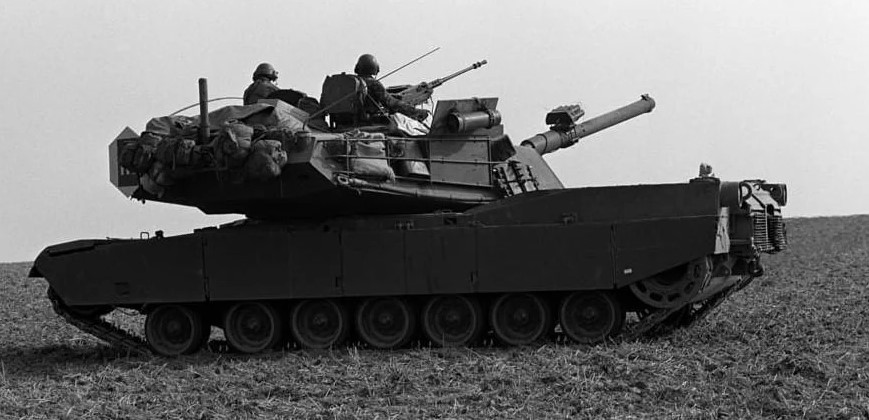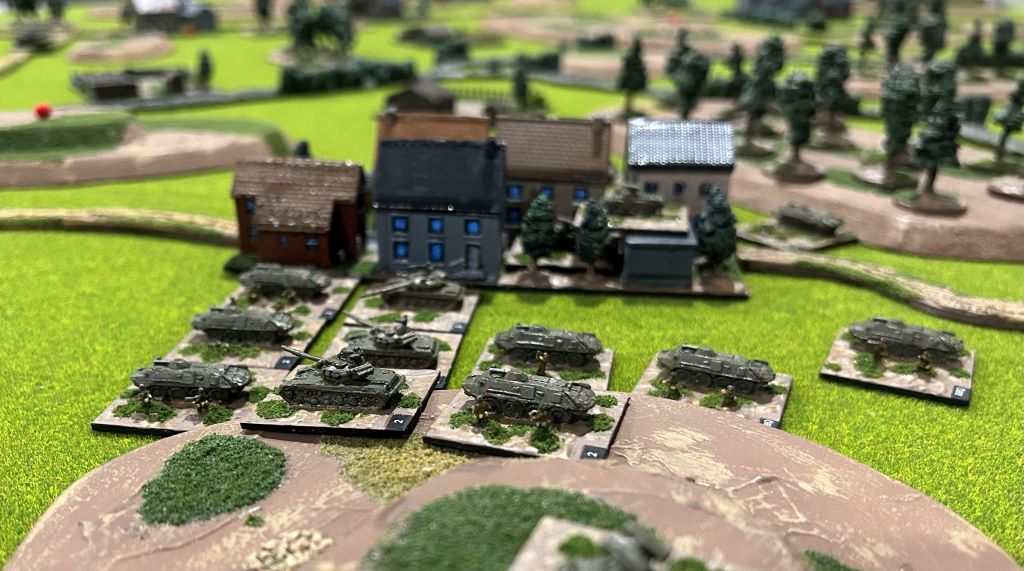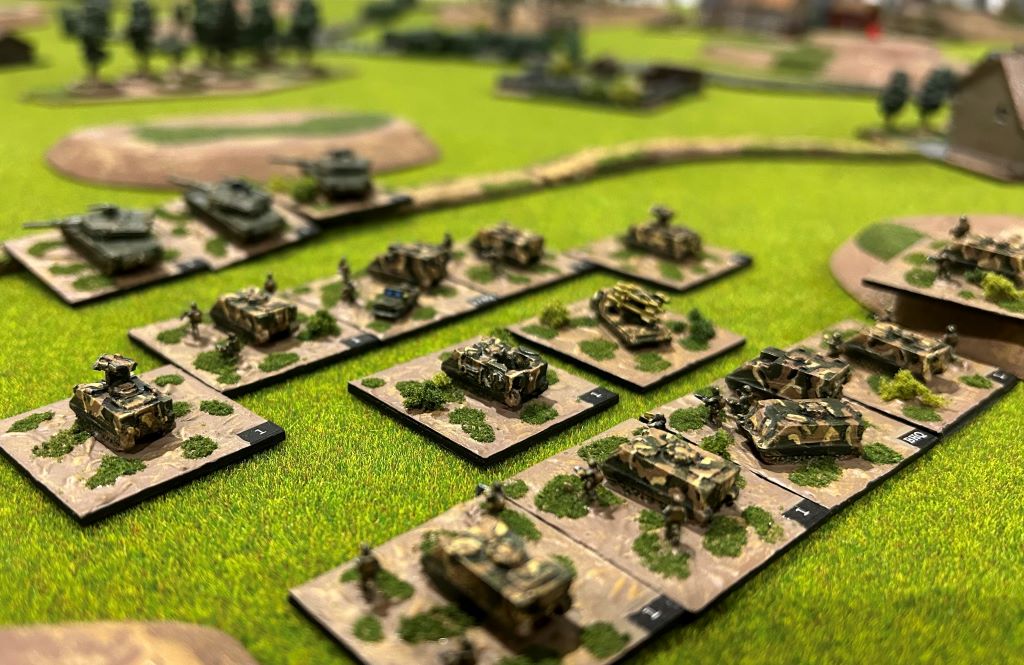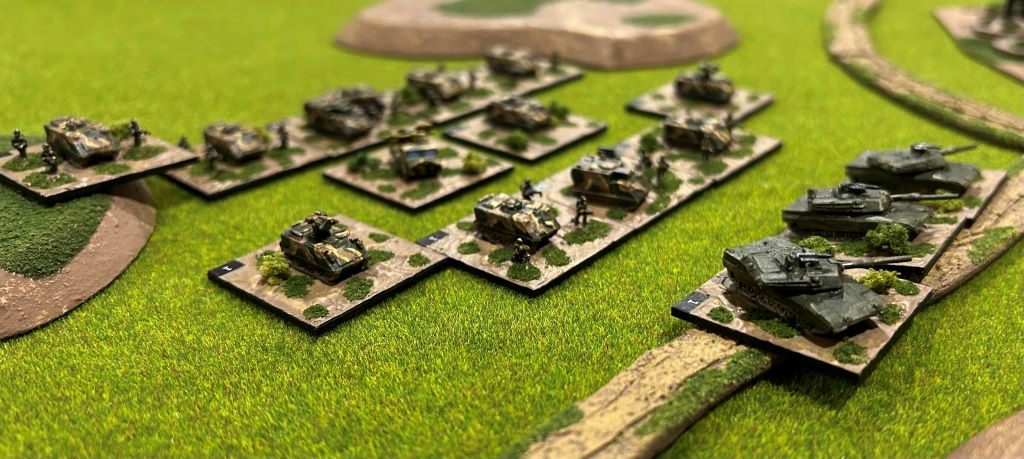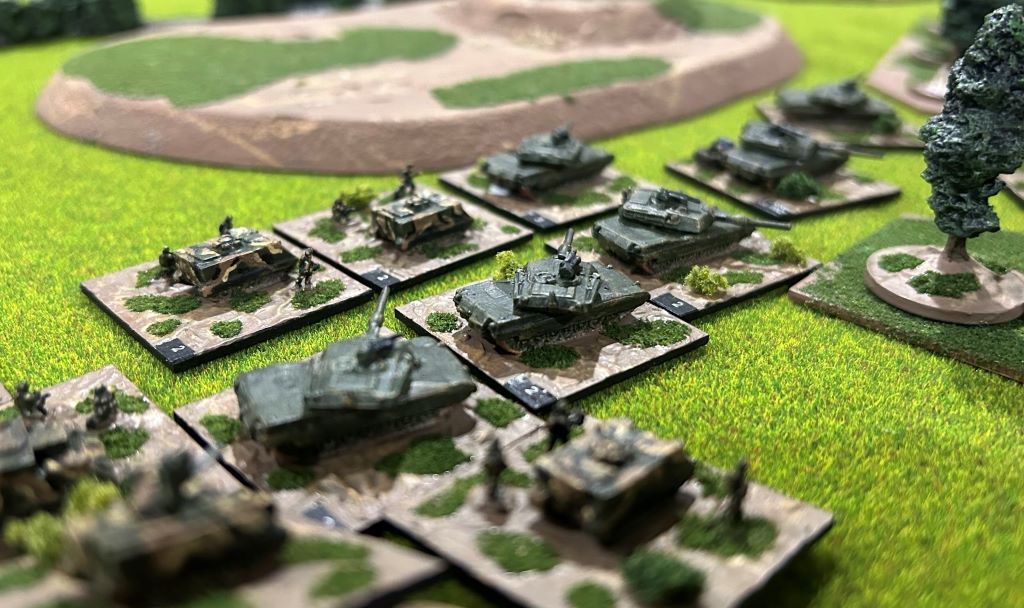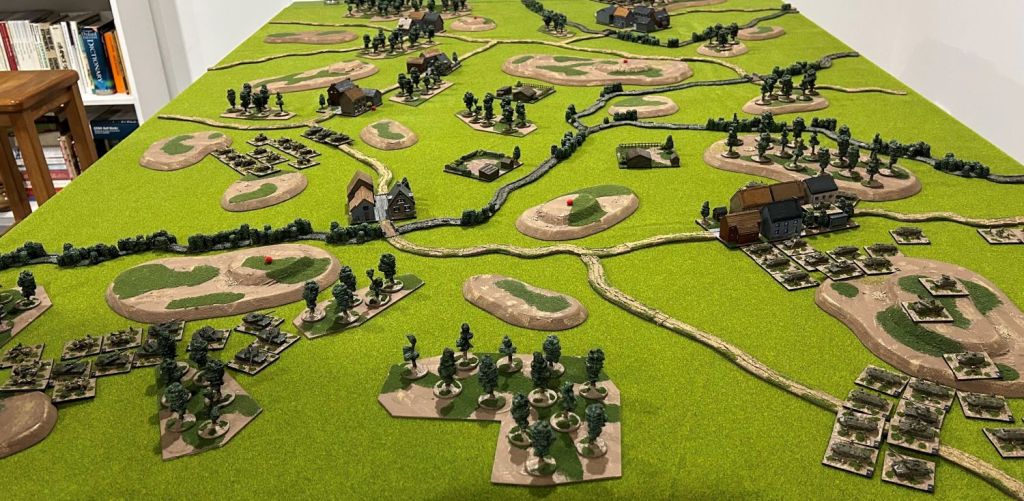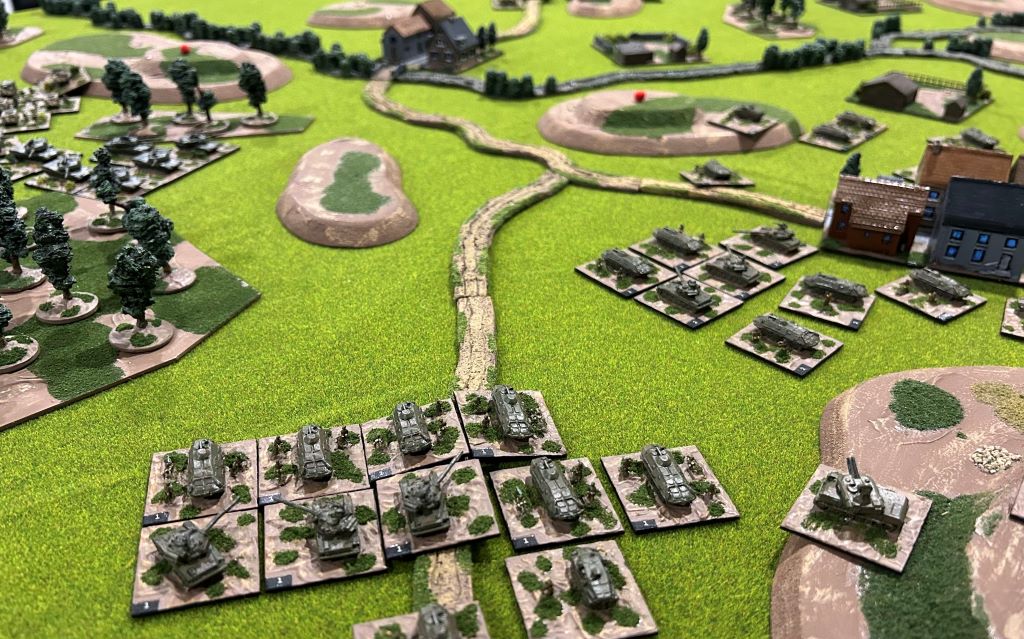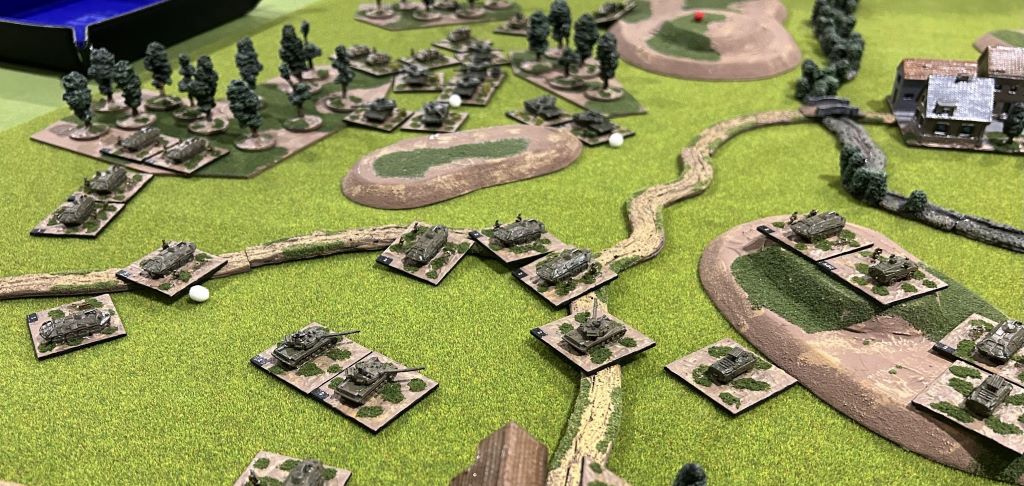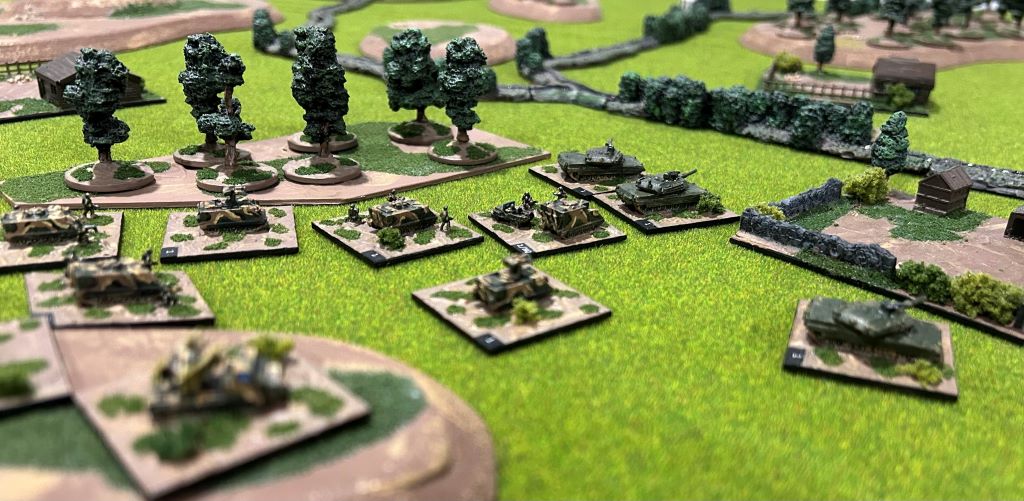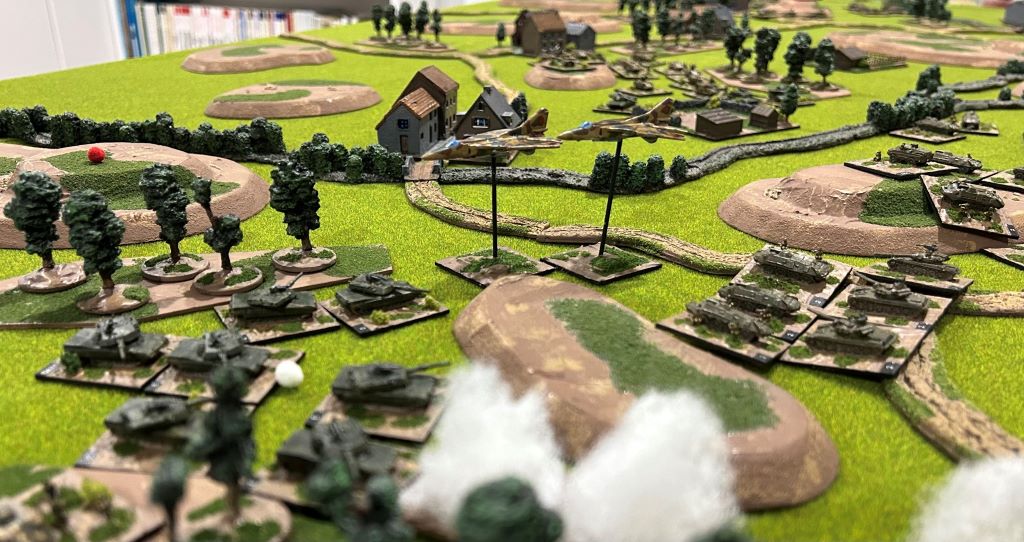The Kleinbach Valley, located southeast of Bremen, was renowned for it picturesque features. Pleasant streams meandered through the valley while small towns dotted the valley where the inhabitants were insulated from major autobahns and busy cities. Yet, all this was all about to change. In the late afternoon during the summer of 1983 the 31st Panzer Grenadier Brigade, itself part of the 11th Panzer Grenadier Division, had deployed across the valley. It’s task was to halt the advancing Soviet thrust which two days prior had pushed across the border.
Moving the brigade forward had resulted in losses due to air attacks, deep artillery strikes and of course mechanical breakdowns. As the brigade deployed its fighting formations were centred around three battalion sized units, each understrength. With a significant area to hold the brigade commander determined to conduct a flexible and mutually supporting defence. A key component of this flexible defence was the centre battalion, the 312th Panzer Grenadier (PG) Battalion. This would reinforce the battalions to the north (311th) or south (313th) as required. It was in the south of the deployment area the West German position was strongest, in part because it centred on the very defensible town of Aulzhausen. A panzer grenadier company was allocated to its immediate defence while the remaining two companies of the 313th PG Battalion deployed to the south of the town. Arguably the weakness in the defensive position of the battalion was to Aulzhausen’s immediate north. Here only a token defence could be established. However, the brigade commander was confident his reserve battalion could block any Soviet advance here should it be required.

Opposite elements of the 57th Guards Motorized Rifle Division, commanded by Major General Oleg Sychevich, moved forward to their start lines. The division had already been heavily engaged the previous day. Now, as the warm afternoon sun filled the valley, it would be sent forward again. Sychevich’s orders were clear, a breakthrough must be achieved at all costs. The breakthrough would be achieved by a two phase attack. Phase One would see two understrength motor rifle regiments moved forward in a concentrated force and attack the southern sector. The attack would overwhelm the enemy and draw in the West German reserves. Once the first phase was complete Phase Two would begin. This would see the release of the 57th Tank Regiment which would breakthrough in the north.
To achieve Phase One the 174th Guards Motor Rifle Regiment (MRR), primarily equipped with BMPs and supported by T-64B tanks, was to engage forces to the south of Aulzhausen with one battalion sweeping north attacking rear areas forces reconnaissance had detected previously. To 174th MRR’s immediate right was the 1st Battalion of the 170th Guards Motor Rifle Regiment, this time equipped with BTR-60PBs and more T-64B tanks. This battalion would reinforce the main effort south of Aulzhausen. Extending further north was an additional battalion the 170th MRR. However, this battalion was held in immediate reserve from where it would act as flank protection or local exploitation force. Supporting the advancing battalions were the 122mm regimental artillery battalions of each regiment, along with one 152mm divisional artillery battalion.
First to be engaged were elements of 1/170th MR Battalion when several T-64Bs, of the supporting tank company, were engaged at long range by Leopard 1A1A1s deployed in concealed positions on a wooded hill. Adding the West German defence were several infantry platoons which utilised their Milan ATGWs against advancing BTRs. However, no sooner had the West Germans revealed their positions than Soviet forward observers began to screen the advance with a series of smoke screens using regimental 122mm artillery battalions and the battalions organic 120mm mortars.
While the 1/170th Battalion was heavily engaged to its front, the the BMPs of the 1/174th began to flank the position. Firing from a series of short halts the T-64Bs, along with the various smoke screens, enabled the Soviets to slowly regain the initiative. Across the line BMPs pressed forward.

Reinforcing the attack was the 2/174 MR Battalion. This battalion conducted deep flanking movement. The battalion was soon advancing on the West German rear. Fearing the advancing BMPs and supporting armour the West German mortars and integral flak elements began to fallback. The Soviet advance was gaining ground.

Reports coming into Sychevich’s were however causing concern. The advance had been delayed and casualties were mounting. Authorisation was given to Brigadier Sutonovich, commander of the 170th MR Regiment (BTR), to commit his second battalion, the 2/170th. It would advance directly on Aulzhausen and reinforce the attack.

Now four Soviet battalions were moving against a single West German battalion. With overwhelming pressure the West German 313th Panzer Grenadier Battalion would surely break.

In support of the German brigade was the brigade’s organic M109 artillery battalion. However, the artillery fire plan had been hastily prepared, no doubt due to the recent deployment of the brigade. It was therefore unsurprising that a series of artillery fires had mixed results. While some Soviet platoons suffered casualties in general the results were below that was expected. Worse, divisional counterbattery assets were unavailable to counter the Soviet artillery concentrations.

As the 1/174th MRR Battalion pressed the West German flank an additional West German Panzer grenadier company were detected. Again Soviet artillery fires were used in screen the advance while BMPs and T-64Bs concentrated overwhelming force in limited areas.

Despite the overwhelming Soviet concentration the German positions were holding, or at least it appeared that way to Major General Oleg Sychevich, safe in his divisional headquarters.

Yet from the West German perspective the situation had in fact become critical. Determined to relieve the pressure on the 313th PG Battalion German formations were actively moving south.

From the north the 311th PG Battalion moved against the right flank of the Soviet thrust and in the process brushed aside the remnants of a Soviet Reconnaissance Battalion. Simultaneously, from the northwest, the 312th PG Battalion moved to block the Soviet flanking movement.

The next engagement would see advanced elements of the 312th PG Battalion engage the 2/174th MR Battalion, itself fast approaching its first objective without loss.

The mood in the West German Brigade Headquarters was lifting. The position around Aulzhausen was still secure and Soviet casualties were mounting, especially on two battalions. But it must be remembered that this was only Phase One of the Soviet plan. Now Major-General Oleg Sychevich turned to his staff. “Comrades, the enemy has stripped the northern sector of forces. Order the 57th Guards Tank Regiment forward. We have our breakthrough.”
Alas, for us we had to call time on our evening game. It was clear the situation in the southern sector was stalling for the Soviets. However, in the north uncommitted elements of the 57th Guard Motor Rifle Division would advance in to a major gap in the West German line – or at least that is what the Soviet histories would record.
Our game was developed with the Scenario System with the situation based on a Soviet Hasty Attack with the Soviets, commanded by two players, opting to reinforce their attack with an Option A. Unfortunately, all the players were somewhat rusty with the rules so a clear decision was not reached in our game window. That said, it was almost certain the Soviet attack had stalled and West German reinforcements would stabilise the situation. Our game focussed on the what is referred above to “Phase One”. A hypothetical “Phase Two” was not part of the scope of our scenario, but is obviously plausible as the West Germans countered the Soviet attack by moving their forces south.
As to the miniatures they are all from my own collection and are from the Heroics & Ros 1/300th range. Terrain is a mix of Irregular Miniatures trees, Timecast buildings and various homemade items.
